Trading is an awesome feature in Minecraft that allows players to swap their items with in-game non-player characters for potentially better items. Some items, in fact, can only be acquired through trading! If you’ve got a lot of random items that you can afford to give up (like coal, raw meat, etc.), you can participate in trades to turn them into something useful!
However, it can be a bit difficult to understand how trading works when you’ve never done it before. It can also be a bit difficult to keep track of all the possible traders Minecraft villagers can become.
Because we use Minecraft to teach coding for kids, we figured it would be beneficial for our students to have a neat little cheat sheet for this process. So we’ve put together this clear, simple guide to Minecraft Villager Trading.
Related Reading:

Table of Contents
How Does Trading Work in Minecraft?
Trading can only be done with a Minecraft Trader. If they’re not on this list, you probably can’t trade with them.
Any villager (expect the nitwit) that does not have a profession can be turned into a trader by placing a specific block in front of them (called a job site block). What trader the villager turns into depends on the block you put down.
Once you’ve traded with the villager-turned-trader, that trader cannot become a villager again—even if their job site block is broken.
Every trader has five career levels: novice, apprentice, journeyman, expert, and master. Every trade you make with them increases their level. It’s worth noting that traders at higher levels will have more items to offer (usually of better value), so make sure you keep trading with them to rake in those experience points.
Now, let’s break down the list of available traders and what you can get from them.
Not So Profitable Villagers
Let’s start with the villagers that aren’t that profitable. This simply means that you won’t get a lot of cool or valuable stuff from them even at their highest level (which is Master). The items they give you are stuff you can easily find or make with much less time and effort. However, they’re still good sources of emeralds that you can save for trading with more profitable villages.
And, at earlier levels, who knows? The stuff they give you may actually be exactly what you need!
We’ll start with the Fisherman as our example guide breakdown:
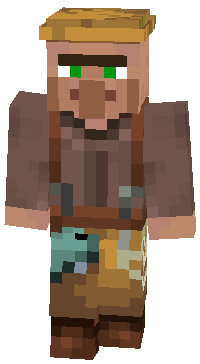
FISHERMAN
Block to Put Down: this refers to the job site block or, basically, the block you put down and link the villager to. In this case, if you put down a Barrel block and link the villager to it, the villager will become a Fisherman to trade with.
Items to Trade for Emeralds
This section refers to the items you can give the villager in exchange for emeralds. For example, you can give 20 string to a Fisherman and receive one emerald. You can also give them 4 pufferfish and still receive one emerald.
- 20 string
- 10 coal
- 15 raw cod
- 13 raw salmon
- 6 tropical fish
- 4 pufferfish
- 1 boat (5 variations)
Items to Receive for Emeralds
This section covers what items you can receive from the villager in exchange for emeralds. Some villagers will request two items in exchange for one. For instance, an apprentice-level fisherman will give 6 cooked salmon in exchange for 6 raw salmon and one emerald.
- 6 raw cod + 1 emerald → 6 cooked cod
- 6 raw salmon + 1 emerald → 6 cooked salmon
- 3 emerald → 1 bucket of cod
- 2 emerald → 1 campfire
- 7 to 22 emerald → 1 Enchanted fishing rod
LEATHERWORKER
Block to Put Down: Cauldron
Items to Trade for Emeralds
- 6 leather
- 26 flint
- 9 rabbit hide
- 4 scute
Items to Receive for Emeralds
- 3 emerald → 1 Leather Pants
- 7 emerald → 1 Leather Tunic
- 5 emerald → 1 Leather Cap
- 4 emerald → 1 Leather Boots
- 6 emerald → Leather Horse Armor
- 6 emerald → 1 saddle
- 5 emerald → 1 Leather Cap

CLERIC
Block to Put Down: Brewing Stand
Items to Trade for Emeralds
- 32 rotten flesh
- 3 gold ingot
- 2 rabbit’s foot
- 4 scute
- 9 glass bottle
- 22 Nether wart
Items to Receive for Emeralds
- 1 emerald → 2 Redstone dust
- 1 emerald → 1 Lapis Lazuli
- 4 emerald → 1 Glowstone dust
- 5 emerald → 1 Ender pearl
- 3 emerald → Bottle o’ Enchanting
CARTOGRAPHER
Block to Put Down: Cartography Table
Items to Trade for Emeralds
- 24 paper
- 11 glass pane
- 1 compass
Items to Receive for Emeralds
- 13 emerald + 1 compass → 1 Ocean Explorer Map
- 14 emerald + 1 compass → 1 Woodland Explorer Map
- 7 emerald → 1 empty map (empty maps can be treasure maps (that lead to sunken ships), woodland mansion maps (that take you to the nearest woodland mansion), etc.)
- 7 emerald → 1 item frame
- 7 emerald → 1 blank banner (16 random variations)
- 1 emerald → 1 flower charge banner pattern
- 2 emerald → 1 field masoned banner pattern
- 2 emerald → 1 bordure indented banner pattern
SHEPHERD
The shepherd trades emeralds for most dyes. However, bear in mind that different dyes are acceptable at different levels. Apprentice-level Shepherds cannot accept red, light gray, pink, yellow, or orange dye, but Journeyman-level Shepherds can. Journeyman-level Shepherds cannot accept green, purple, cyan, magenta, brown, or blue dye, but Expert-level Shepherds can.
Block to Put Down: Loom
Items to Trade for Emeralds
- 18 wool (4 variations)
- 12 dye (5 variations: lime, gray, light blue, black, white)
- 12 dye (5 variations: red, light gray, pink, yellow, orange)
- 12 dye (6 variations: green, purple, cyan, magenta, brown, blue)
Items to Receive for Emeralds
- 2 emerald → 1 shears
- 1 emerald → 1 wool (16 variations)
- 1 emerald → 1 carpet (16 variations)
- 3 emerald → 1 bed (16 variations)
- 3 emerald → 1 blank banner (16 variations)
- 2 emerald → 3 painting
Related Reading:
Fairly Profitable Villagers
These are the villagers that offer pretty useful stuff for trade. The item you get for your emeralds may be difficult to find, purchase, or craft in-game (depending on what you get) so scoring a good deal with these villagers is fairly possible. They’re not as useful and profitable as the ones in the upcoming third category, but it’s still a good idea to link them up and trade with them every now and then. Let’s start:
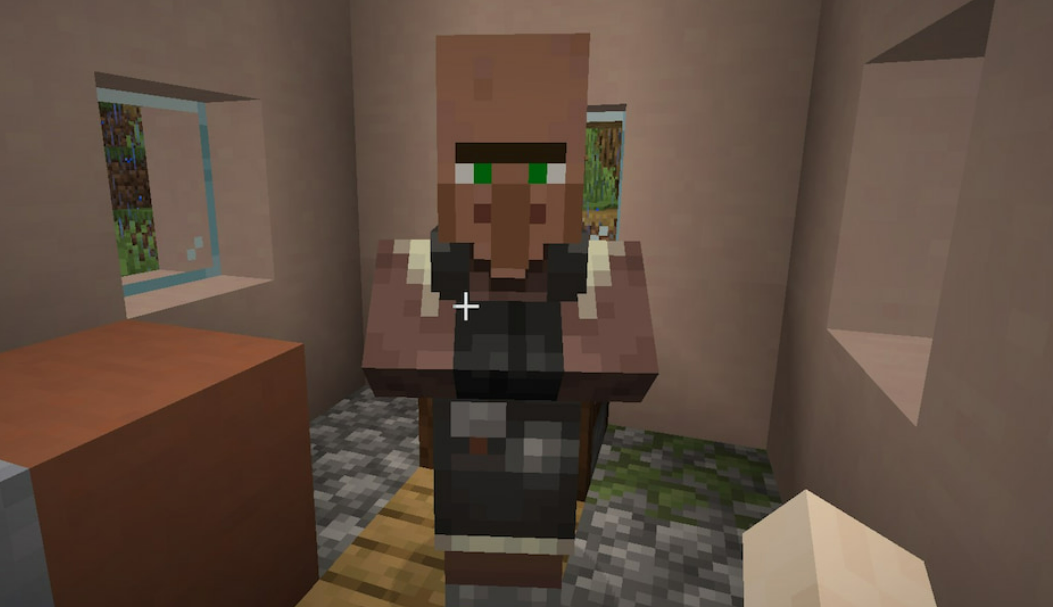
MASON
Block to Put Down: Stonecutter
Items to Trade for Emeralds
- 10 clay
- 20 stone
- 16 stone (3 variations)
- 12 Nether quartz
Items to Receive for Emeralds
- 1 emerald → 10 brick
- 1 emerald → 4 chiseled stone bricks
- 1 emerald → 4 polished stone (one of 3 variations) OR Dripstone Block
- 1 emerald → 1 Colored Terracotta or Glazed Terracotta (16 variations)
- 1 emerald → 1 block of Quartz OR Quartz pillar
Why it’s profitable: Quartz isn’t always easy to find or mine in Minecraft, so having a readily available source is a good idea. If you like building and designing, a somewhat stable source of Colored Terracotta and/or Glazed Terracotta can also be useful.
Related Reading:
FLETCHER
Block to Put Down: Fletching Table
Items to Trade for Emeralds
- 32 sticks
- 26 flint
- 14 string
- 24 feather
- 8 tripwire hook
Items to Receive for Emeralds
1 emerald + 10 gravel → 10 flint
2 emerald + 5 arrow → 5 tipped arrow (1 of 15 variations)
1 emerald → 16 arrows
2 emerald → 1 bow
3 emerald → 1 crossbow
7 to 21 emerald → 1 Enchanted bow
8 to 22 emerald → 1 Enchanted crossbow
Why it’s profitable: while crafting and enchanting weapons is fairly easy to do once you have all the resources needed, it can still be tedious. And tipped arrows are especially tricky to make. So if you can buy them using emeralds, we highly recommend you do so. Of course, the trades are random, so you might not always get the same type, but any tipped arrow is good to have on-hand.
BUTCHER
Block to Put Down: Smoker
Items to Trade for Emeralds
- 14 raw chicken
- 7 raw porkchop
- 4 raw rabbit
- 15 coal
- 7 raw mutton
- 10 raw beef
- 10 dried kelp block
- 10 sweet berries
Items to Receive for Emeralds
- 1 emerald → 1 rabbit stew
- 1 emerald → 5 cooked porkchop
- 1 emerald → 8 cooked chicken
- 1 emerald → 3 cooked beef
Why it’s profitable: it’s always good to have a pile of cooked meat on-hand—especially beef. Cooked beef restores 4 hunger points and 12.8 saturation, which is a lot. Rather than cooking it in a furnace, why not buy a few handfuls from your friendly village Butcher?
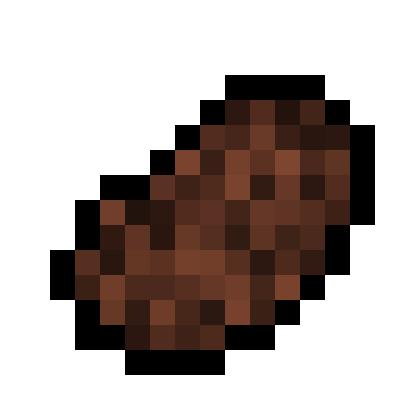
Highly Profitable Villagers
These are the Minecraft villagers you absolutely should set up immediately. Once you have their job site block, put down as many as you can and link up the villagers for trade. The items they provide can be pretty difficult to find, purchase, or craft in-game, which is why we highly recommend setting up several of the same traders at one time.
Some Minecraft players even have dedicated Trading Halls that they fill with only these Highly Profitable villagers. Take a look!
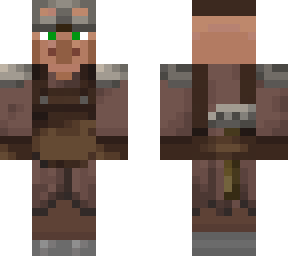
ARMORER
Block to Put Down: Blast Furnace
Items to Trade for Emeralds
- 15 coal
- 4 iron ingot
- 1 lava bucket
- 1 diamond
Items to Receive for Emeralds
Novice
- 5 emerald → 1 iron helmet
- 9 emerald → 1 iron chestplate
- 7 emerald → 1 iron leggings
- 4 emerald → 1 iron boots
Apprentice
- 36 emerald → 1 bell
- 3 emerald → 1 chainmail leggings
- 1 emerald → 1 chainmail boots
Journeyman
- 1 emerald → 1 chainmail helmet
- 4 emerald → 1 chainmail chestplate
- 5 emerald → 1 shield
Expert
- 19 to 33 emerald → 1 Enchanted diamond leggings
- 13 to 27 emerald → 1 Enchanted diamond boots
Master
- 13 to 27 emerald → 1 Enchanted diamond helmet
- 21 to 35 emerald → 1 Enchanted diamond chestplate
Why it’s profitable: it’s a lot easier to gather emeralds through trading than it is to painstakingly mine enough diamonds to build a whole suit of diamond armor—let alone an Enchanted one.
What’s more, those diamonds that you spend crafting diamond armor could be put to use in other recipes or items.
Related Reading:
Iron is much easier to find than diamonds, but there are also a ton of other recipes you can use them in other than pieces of iron armor. The Enchantments on the armor are random, as per usual, but you might just luck out and get a set with really, really good traits.
TOOLSMITH
Block to Put Down: Smithing Table
Items to Trade for Emeralds
- 15 coal
- 4 iron ingot
- 30 flint
- 1 diamond
Items to Receive for Emeralds
Novice
- 1 emerald → 1 stone axe
- 1 emerald → 1 stone shovel
- 1 emerald → 1 stone pickaxe
- 1 emerald → 1 stone hoe
Apprentice
- 36 emerald → 1 bell
Journeyman
- 6 to 20 emerald → 1 Enchanted iron axe
- 7 to 21 emerald → 1 Enchanted iron shovel
- 8 to 22 emerald → 1 Enchanted iron pickaxe
- 4 emerald → 1 diamond hoe
Expert
- 17 to 31 emerald → 1 Enchanted diamond axe
- 10 to 24 emerald → 1 Enchanted diamond shovel
Master
- 18 to 32 emerald → 1 Enchanted diamond pickaxe
Why it’s profitable: the same reason the Armorer is so profitable to trade with. You can save a lot of diamonds by just painstakingly trading and collecting emeralds. And considering that diamond tools are some of the most durable options (second only to Netherite) available, we’d say trading a handful of coal or some flint to emeralds, and then trading emeralds to possibly Enchanted diamond tools is well worth the process.
WEAPONSMITH
Block to Put Down: Grindstone
Items to Trade for Emeralds
- 15 coal
- 4 iron ingot
- 24 flint
- 1 diamond
Items to Receive for Emeralds
Novice
- 3 emerald → 1 iron axe
- 7 to 21 emerald → Enchanted iron sword
Apprentice
- 36 emerald → 1 bell
Expert
- 17 to 31 emerald → Enchanted diamond axe
Master
- 13 to 27 emerald → Enchanted diamond sword

Why it’s profitable: the Weaponsmith is profitable in the same way the Armorer and Toolsmith are profitable. Again; you’ll save lots of diamonds by spending emeralds for diamond weapons. Plus, many long-time Minecraft players say that the Diamond axe will always have some sort of battle enchantment.
FARMER
Block to Put Down: Composter
Items to Trade for Emeralds
- 20 wheat
- 26 potato
- 22 carrot
- 15 beetroot
- 6 pumpkin
- 4 melon
Items to Receive for Emeralds
Novice
- 1 emerald → 6 bread
Apprentice
- 1 emerald → 4 pumpkin pie
- 1 emerald → 4 apple
Journeyman
- 3 emerald → 18 cookie
Expert
- 1 emerald → 1 suspicious stew (with 5s of Night Vision)
- 1 emerald → 1 suspicious stew (with 8s of Jump Boost)
- 1 emerald → 1 suspicious stew (with 7s of Weakness)
- 1 emerald → 1 suspicious stew (with 6s of Blindness)
- 1 emerald → 1 suspicious stew (with 14s of Poison)
- 1 emerald → 1 suspicious stew (with 0.35s of Saturation)
Master
- 3 emerald → 3 Golden Carrot
- 3 emerald → 3 Glistering Melon Slice
Why it’s profitable: If you’ve never come across the Golden Carrot yet, here’s why it’s one of the most valuable food and brewing items in Minecraft—and why you should definitely gather as much as you can: it provides the second most saturation in the game (the first being suspicious stew crafted with blue orchid or dandelion).
The only way you can get this carrot is by finding it in specific chests (all with less than 15% drop chances), crafting it (1 carrot + 8 gold nugget), or trading it.
And, as you can probably guess, trading it is by far the easiest option.
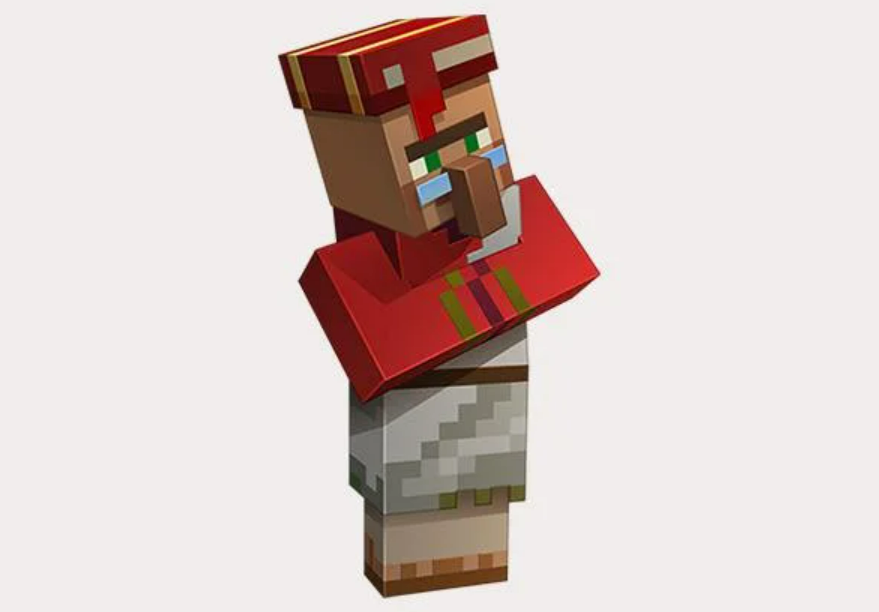
LIBRARIAN
Block to Put Down: Lectern
Items to Trade for Emeralds
- 24 paper
- 5 ink sac
- 4 book
- 1 book and quill
Items to Receive for Emeralds
All Levels
- 5 to 64 emerald + 1 book → 1 Enchanted book
Novice
- 9 emerald → 1 bookshelf
Apprentice
- 1 emerald → 1 lantern
Journeyman
- 1 emerald → 4 glass
Expert
- 5 emerald 1 clock
- 4 emerald 1 compass
Master
- 20 emerald 1 name tag
 W
W
Why it’s profitable: The Librarian gives you a random Enchanted book in exchange for emeralds (plus one regular book). Enchanted books let you add enchantments to certain items which, as you can probably guess, will be extremely useful in fighting, mining, and adventuring.
Some examples of Enchantments include Efficiency Enchantments like Speed (that you can apply to tools to help speed up mining and crafting) and Unbreaking (greatly improves a tool’s durability).
Check out our Minecraft Enchantments guide for more info!
Conclusion
We hope you found our Minecraft villager trading guide helpful! Here’s a quick list of all possible traders, again:
- Not so Profitable Villagers
- Fisherman
- Leatherworker
- Cleric
- Cartographer
- Shepherd
- Fairly Profitable Villagers
- Mason
- Fletcher
- Butcher
- Highly Profitable Villagers
- Armorer
- Toolsmith
- Weaponsmith
- Farmer
- Librarian
Remember, the best way to get the most emeralds is to trade with one villager that offers a lot of different trades. That way, you can get as many emeralds from them as possible before they lock up their trades.
Check out more handy little Minecraft tricks in our 15 Little-Known Minecraft Tips to up Your Game guide!
It can be tough to remember which Villager offers what at times, but you’ll eventually get the hang of it. This is the same attitude we encourage when we teach coding for kids. It’s tough, but anyone can do it through constant, continuous practice and repetition.
Best of luck and happy trading!